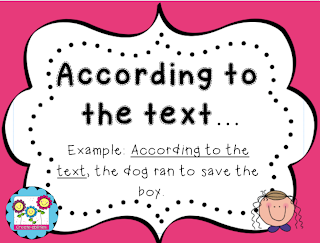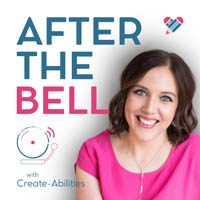
Close Reading Part 1: Evidence Based Terms
When our district first started implementing the common core about two-ish years ago I started hearing the words “close reading”. I won’t lie, at first I thought everyone was saying “cloze reading”. I honestly kept thinking “Cloze reading is supposed to be the next big thing? This is the next thing that will save us all? This has been around forever!” Then we had a professional development on it and I was too embarrassed (until now obviously) to tell anyone what I had thought.
After the first professional development we had I was still confused. It seemed to me like this was something we were already having our students do in guided reading groups. We were asking higher level questions and trying to bring our students back into the text. I didn’t really see how this was different.
That all changed when I got hired to train other teachers over the summer. Guess what the topic of the four-day long training was? You guessed it! Close reading. My first thought: “Yay.” But I figured since I was going to be training other teachers, I better look into it. I was pretty amazed by what I found.
The fantastic and wonderful reading specialist at my school was my go-to person for this task. She had shown our faculty this video on close reading that really stated in simple terms what it was.
I really think my favorite part of the video is that you can tell that Dr. Fisher and the interviewer are not even in the same room! But I digress.
A close read is getting the students back into the text. We want our students to be able to justify their thinking or answers by using evidence from the text. We have had a big swing to building background knowledge and making connections. While those things are important and there is definitely a place for those in reading instruction, we have focused too much on them. I know it was very easy for me to ask my students what they thought or felt about a character or topic but I had a harder time asking them what the author thought or felt and how they could prove it.
So I decided that since I needed to be better, I would start small. I had taught my third graders the word justify. I do a lot of whole brain teaching (if you have never heard of it check out their website here). This means my students and I are actively responding, gesturing and repeating things all day. Whenever I said “Justify!” my students would respond “You can prove it!”. They knew that this meant finding evidence for their answers. We had done this a lot with math and I knew it would be easy to transfer it to reading. I decided to make my “Evidence Based Terms Posters” and post them on my whiteboard in the front of the room. They made a huge difference in my teaching and my students answering!
I posted them where I could see them so I would remember to refer to them and I posted them where the students could easily see them so they could use them when answering. The terms that I used for my posters were:
* According to the text…
* The author stated…
* From the reading I know that…
* Because…
* For instance…
* For example…
* It said on page ___ that…
I started with one term at a time and showed them how to use it. I would do teacher think alouds and say things like “From the reading I know that Matilda loved going to the library.” or “From the reading I know that Nick thought of the word frindle when walking home from school”. Then I would encourage my students to use the phrase when they answered. When we had mastered one, I’d add another. I was amazed by how well they sounded. Then it started transferring into their writing! They began to complete assignments using these phrases without my direction to do so. It was awesome! (Of course I also had an assignment early on where my students wrote things like “For instance Matilda liked to read.” and “The author stated I know that Nick liked to make up new words because it’s fun to make up new words.” Perfection thy name is not Cassie.)
If close reading overwhelms you, don’t let it. This is not something that has to be done every day, for every reading. Start small like I did. Just use these phrases to bring your students back into the text when answering the questions you are already asking. I plan on posting more information on close reading: what a close read looks like, text-dependent questions etc. as I go. I am still learning so much about it and we can continue to learn together.
Have you done close reading in your classroom? What did it look like? What did you like or dislike?
PEACE, LOVE, AND STICKY NOTES

Blog Categories
Meet the author



